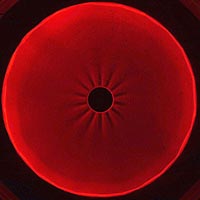
Buckling of thin stretched membranes
Collaboration with Roberto Bernal and Francisco Melo
Abstract
We study experimentally the main features of wrinkles that form in an initially stretched and flat elastic membrane when subjected to an axi-symmetric traction force at the center. The wavelength and amplitude of wrinkle pattern are accurately characterized as the membrane tension and the traction forced are varied. We show that wrinkles are the result of a supercritical instability and appear for a well-defined critical traction force that is a function of the membrane tension. Wrinkle length and amplitude increase as the traction force is increased further. By contrast, both quantities decrease as the membrane tension is increased. Calculations based on symmetry arguments and elastic energy minimization are in good agreement with experiments and provide a simple way to investigate configurations that are difficult to access experimentally. Such problems include wrinkles in elastic nano-films on finite-thickness viscous substrates used in semiconductor technology or in cellular forces detection.

Experimental configuration
A thin elastic membrane is stretched on a circular frame (Fig.2) and observed from above by means of a digital camera. The use of two different light sources makes possible to determine the in-plane and out-of-plane displacements of the membrane when subjected to an axi-symmetric pulling force at the center; in order to impose a radial displacement along a circle of radius r0 at the center, we suck the membrane in a cylinder located underneath the membrane.
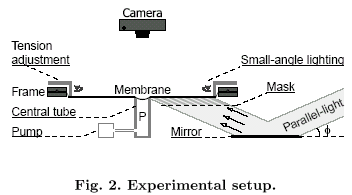
Experimental results
When the imposed displacement d exceeds a well-defined critical-value, radial wrinkles nucleate around the inner cylinder (Fig.3). We are aiming at the experimental and theoretical description of this pattern. The small-angle lighting makes possible to count easily the number n of wrinkles, which is found not to depend on the displacement imposed at the center. By contrast, n increases linearly with the radius r0 of the inner cylinder and increases slightly with the initial tension b of the membrane (Fig.7).
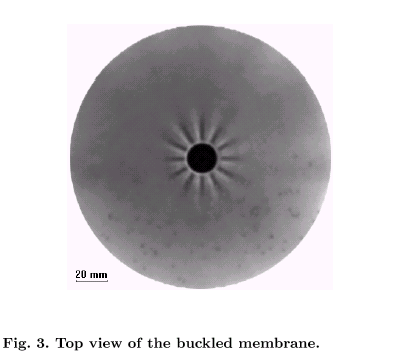
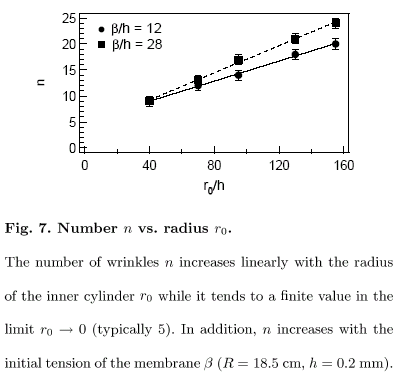
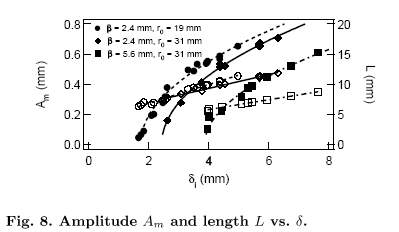
The use of a second light source makes possible to determine both the horizontal and vertical displacements of the membrane (see publication below for details). Wrinkles of finite length L are shown to nucleate when the imposed displacement exceeds a critical value dic (Fig.8). We determine accurately the wrinkle profile; the maximum amplitude Am increases like (di-dic)1/2, whereas the typical length L increases linearly with di. The critical displacement dic increases with both the thickness and initial tension of the membrane.
Theoretical results
Theoretical analysis shows that the wrinkling of the membrane, in our experimental situation, is only due to a geometrical effect. Because of the simple radial geometry, the equations of the elasticity that govern the problem can be reduced to two simple differential equations. We solve these equations numerically and extend our experimental results to limits that cannot be accessed experimentally.
Related publication
Wrinkle
formations
in axi-symmetrically
stretched
membranes,
Géminard
J.-C.,
Bernal R.
and Melo
F,
Eur. Phys. J. E
15
(2004)
117-126.